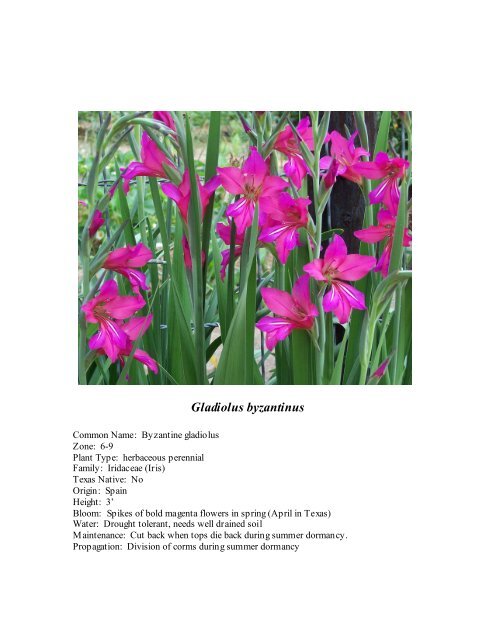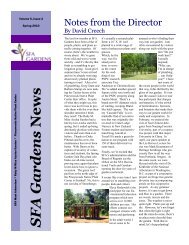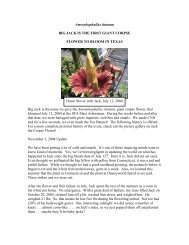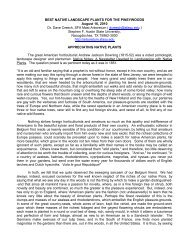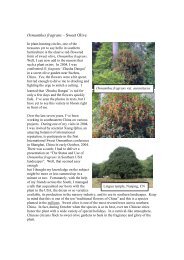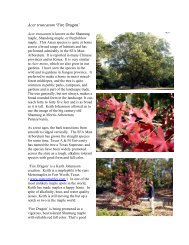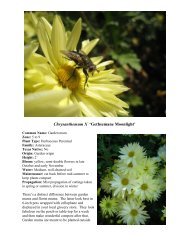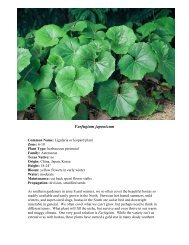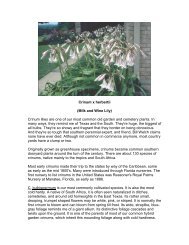Gladiolus byzantinus - SFA Gardens
Gladiolus byzantinus - SFA Gardens
Gladiolus byzantinus - SFA Gardens
Create successful ePaper yourself
Turn your PDF publications into a flip-book with our unique Google optimized e-Paper software.
<strong>Gladiolus</strong> <strong>byzantinus</strong><br />
Common Name: Byzantine gladiolus<br />
Zone: 6-9<br />
Plant Type: herbaceous perennial<br />
Family: Iridaceae (Iris)<br />
Texas Native: No<br />
Origin: Spain<br />
Height: 3’<br />
Bloom: Spikes of bold magenta flowers in spring (April in Texas)<br />
Water: Drought tolerant, needs well drained soil<br />
Maintenance: Cut back when tops die back during summer dormancy.<br />
Propagation: Division of corms during summer dormancy
Unlike the large flowered garden gladiolus that generally have to be staked for the<br />
summer and lifted and divided for the winter, this heirloom stalwart is a long lived sturdy<br />
perennial which stands on its own. Found in many Southern cottage gardens as well as<br />
abandoned homesites, its longevity is measured in centuries not years. All it needs is full<br />
sun, winter moisture, and summer drought. It’s an excellent cut flower as well as<br />
showpiece for the perennial border. In 2006 it was named the Heirloom Bulb of the<br />
Year. Make sure and order from proven sources, as most sell a pale pink, inferior,<br />
smaller-flowered species that over multiplies, blooms sporadically, and tends to flop in<br />
the garden. Its corms are smaller and much cheaper. The real McCoy can be had from<br />
the following sources:<br />
http://bayoucityheirloombulbs.com<br />
http://plantdelights.com<br />
http://southernbulbs.com<br />
Greg Grant, Research Associate, <strong>SFA</strong> <strong>Gardens</strong> – grantdamon@sfasu.edu


